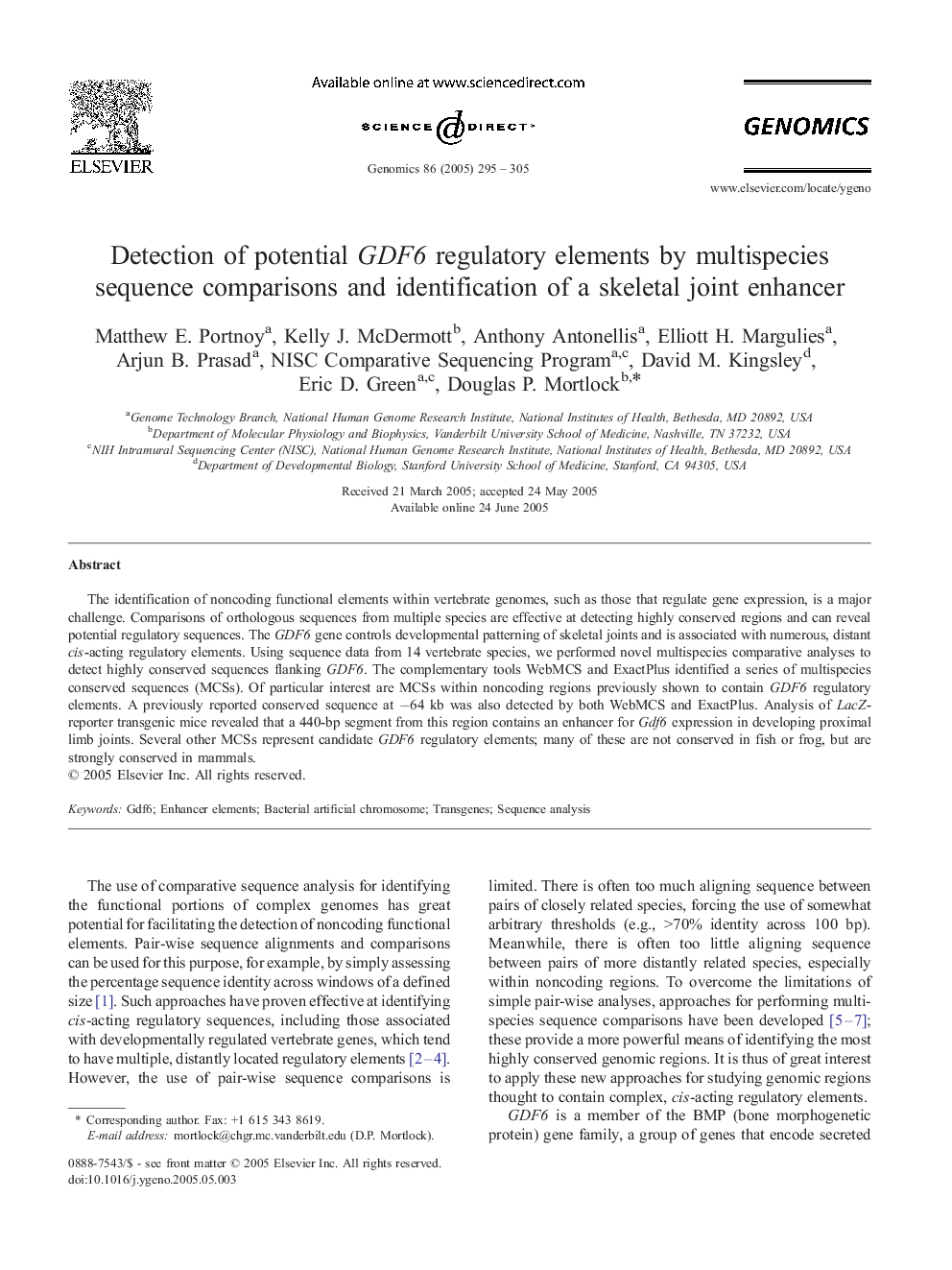| Article ID | Journal | Published Year | Pages | File Type |
|---|---|---|---|---|
| 9131869 | Genomics | 2005 | 11 Pages |
Abstract
The identification of noncoding functional elements within vertebrate genomes, such as those that regulate gene expression, is a major challenge. Comparisons of orthologous sequences from multiple species are effective at detecting highly conserved regions and can reveal potential regulatory sequences. The GDF6 gene controls developmental patterning of skeletal joints and is associated with numerous, distant cis-acting regulatory elements. Using sequence data from 14 vertebrate species, we performed novel multispecies comparative analyses to detect highly conserved sequences flanking GDF6. The complementary tools WebMCS and ExactPlus identified a series of multispecies conserved sequences (MCSs). Of particular interest are MCSs within noncoding regions previously shown to contain GDF6 regulatory elements. A previously reported conserved sequence at â64 kb was also detected by both WebMCS and ExactPlus. Analysis of LacZ-reporter transgenic mice revealed that a 440-bp segment from this region contains an enhancer for Gdf6 expression in developing proximal limb joints. Several other MCSs represent candidate GDF6 regulatory elements; many of these are not conserved in fish or frog, but are strongly conserved in mammals.
Related Topics
Life Sciences
Biochemistry, Genetics and Molecular Biology
Genetics
Authors
Matthew E. Portnoy, Kelly J. McDermott, Anthony Antonellis, Elliott H. Margulies, Arjun B. Prasad, NISC Comparative Sequencing Program NISC Comparative Sequencing Program, David M. Kingsley, Eric D. Green, Douglas P. Mortlock,
